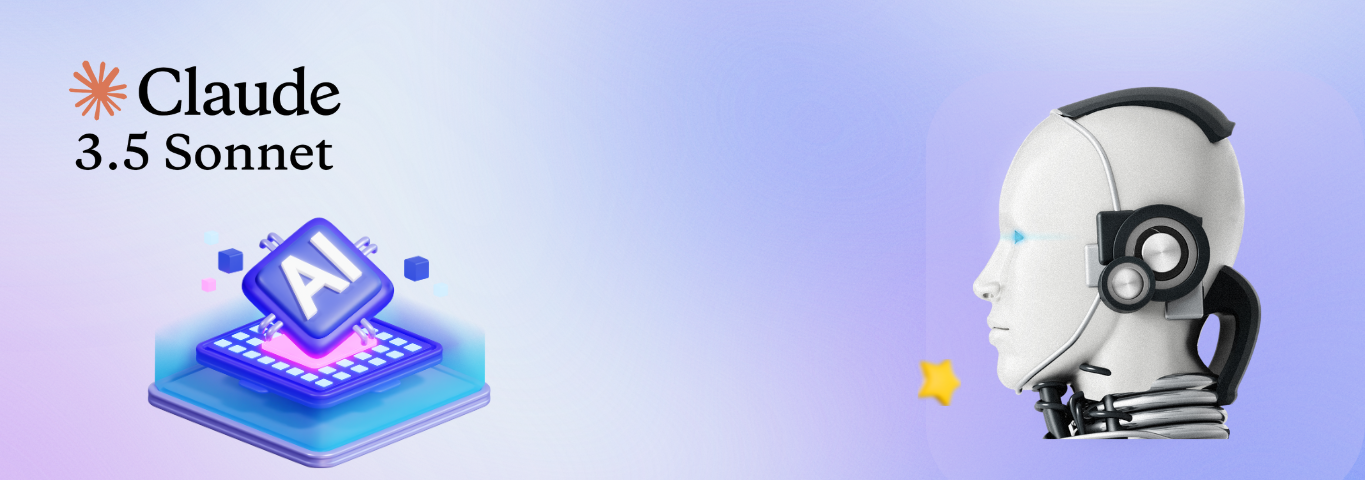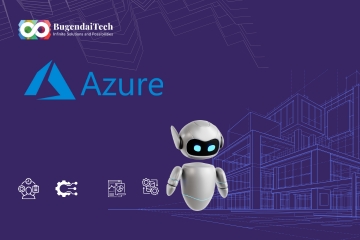In the rapidly evolving landscape of artificial intelligence, Anthropic, OpenAI's biggest rival, has introduced its latest AI model: Claude 3.5 Sonnet. This model represents a significant leap forward in AI technology, boasting speed, intelligence, and cost-efficiency improvements.
This blog will explore what Claude 3.5 Sonnet is, its capabilities, how it compares to other models like GPT-4o and Gemini-1.5 Pro, and its potential applications.
What is Claude 3.5 Sonnet?
Claude 3.5 Sonnet is a large language model (LLM) developed by Anthropic. As part of the Claude 3.5 series, it is designed to perform complex tasks with remarkable efficiency. These models, known as generative pre-trained transformers (GPTs), are pre-trained to predict the next word in large amounts of text, enabling them to generate coherent and contextually relevant responses.
Claude 3.5 Sonnet significantly outperforms its predecessor, Claude 3 Opus, offering twice the speed and enhanced capabilities.
What are the capabilities and performance of Claude 3.5 Sonnet?
Claude 3.5 Sonnet has demonstrated exceptional performance across various benchmarks, making it a standout in the AI industry. Here are some key capabilities of Claude 3.5 Sonnet:
- Speed and Efficiency: Claude 3.5 Sonnet operates at twice the speed of Claude 3 Opus, making it ideal for tasks that require quick responses and processing large volumes of data. This performance boost is particularly beneficial for context-sensitive customer support and orchestrating multi-step workflows.
- Advanced Reasoning and Knowledge: The model excels in graduate-level reasoning (GPQA) and undergraduate-level knowledge (MMLU). It has shown notable improvements in understanding nuance, humor, and complex instructions, making it capable of generating high-quality content with a natural and relatable tone.
- Coding Proficiency: Claude 3.5 Sonnet is highly proficient in coding, as demonstrated by its performance on the HumanEval benchmark. It can autonomously write, edit, and execute code, making it effective for updating applications, fixing bugs, and migrating codebases.
- Visual Reasoning: Besides its text-based capabilities, Claude 3.5 Sonnet excels in visual reasoning tasks. It surpasses its predecessor on standard vision benchmarks and can accurately transcribe text from imperfect images, which is crucial for industries like retail, logistics, and financial services.
Comparison with GPT-4o and Gemini-1.5 Pro
Anthropic claims that Claude 3.5 Sonnet outperforms its peers, including OpenAI's GPT-4o and Google's Gemini-1.5 Pro. Here’s how it stacks up against these models:
- Superior Speed and Cost Efficiency: Claude 3.5 Sonnet's speed advantage over GPT-4o and Gemini-1.5 Pro makes it more cost-effective for businesses that require real-time processing and large-scale data handling.
- Enhanced Problem-Solving Skills: In internal evaluations, Claude 3.5 Sonnet solved 64% of problems compared to Claude 3 Opus’s 38%. Its problem-solving capabilities significantly improve over other models, making it a robust tool for developers and engineers.
- Higher Benchmark Scores: Based on Anthropic’s benchmark scores, Claude 3.5 Sonnet outperformed GPT-4o and Gemini-1.5 Pro in seven of eight overall benchmarks. These include tests for reasoning, knowledge, and coding proficiency.
How can Claude 3.5 Sonnet be used?
Claude 3.5 Sonnet has the potential to transform various fields. Here are some exciting possibilities:
- Customer Support: Its ability to quickly understand and respond to complex queries makes it ideal for context-sensitive customer support. Businesses can deploy Claude 3.5 Sonnet to handle customer inquiries efficiently and effectively.
- Software Development: With its coding proficiency, Claude 3.5 Sonnet can assist developers in writing, editing, and debugging code. It can be integrated into development environments like VS Code to streamline development.
- Data Interpretation: Claude 3.5 Sonnet’s visual reasoning capabilities make it valuable for tasks that involve interpreting charts, graphs, and other visual data. This can be particularly useful in fields like finance, logistics, and retail.
- Content Generation: The model’s ability to generate high-quality, nuanced content makes it an excellent tool for content creators. It can be used to write articles, create marketing materials, and generate reports.
How can I access Claude 3.5 Sonnet?
Claude 3.5 Sonnet is accessible through multiple platforms, making it easy for users to engage with the model based on their needs:
- Claude.ai Website: The official Claude website offers free access to Claude 3.5 Sonnet.
- Claude iOS App: The Claude iOS app provides seamless interaction with the model from iPhones and iPads for mobile users.
- Anthropic API: Developers can use the Anthropic API to integrate Claude 3.5 Sonnet into their applications and services.
- Amazon Bedrock and Google Cloud’s Vertex AI: Claude 3.5 Sonnet is also available through Amazon’s Bedrock service and Google Cloud’s Vertex AI platform, offering managed solutions for deploying and scaling AI models.
Conclusion
Claude 3.5 Sonnet represents a significant advancement in AI technology, with superior speed, intelligence, and cost-efficiency. Its diverse capabilities and high performance across benchmarks make it a game-changer in AI.
Whether for customer support, software development, data interpretation, or content generation, Claude 3.5 Sonnet offers a versatile and powerful tool for businesses and developers. As AI technology continues to evolve, models like Claude 3.5 Sonnet will play a crucial role in shaping the future of various industries.






Comments